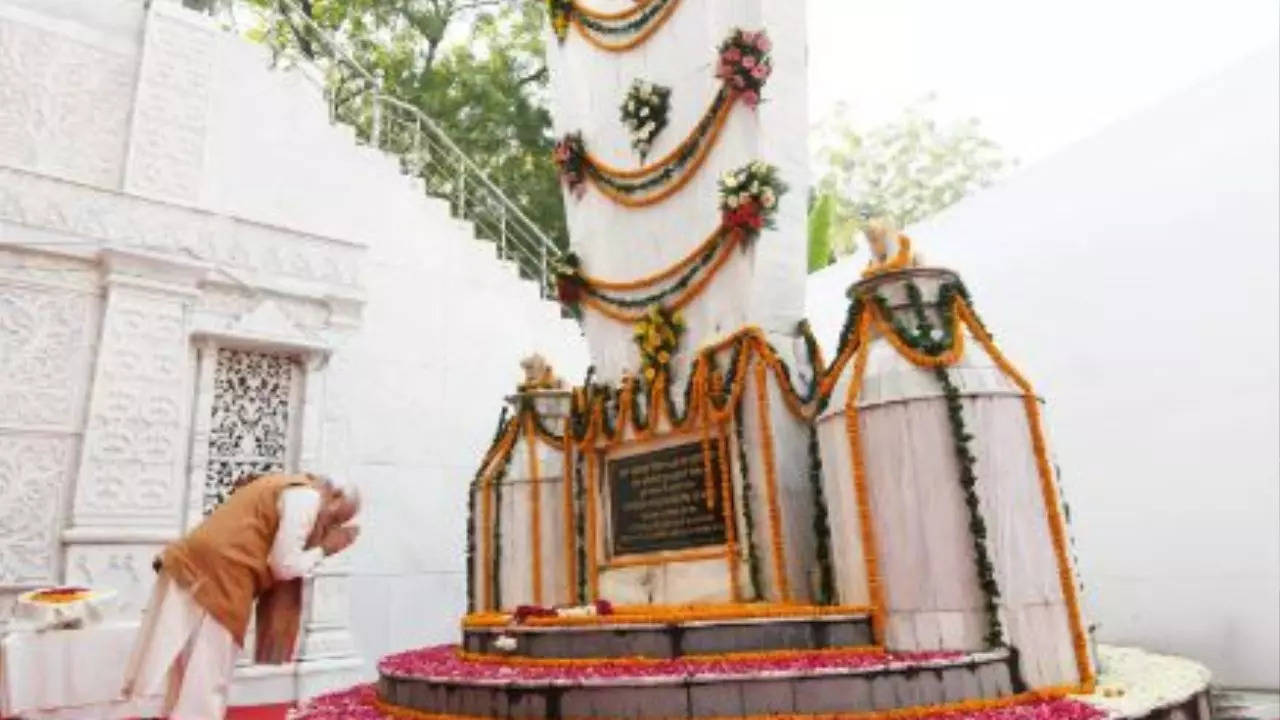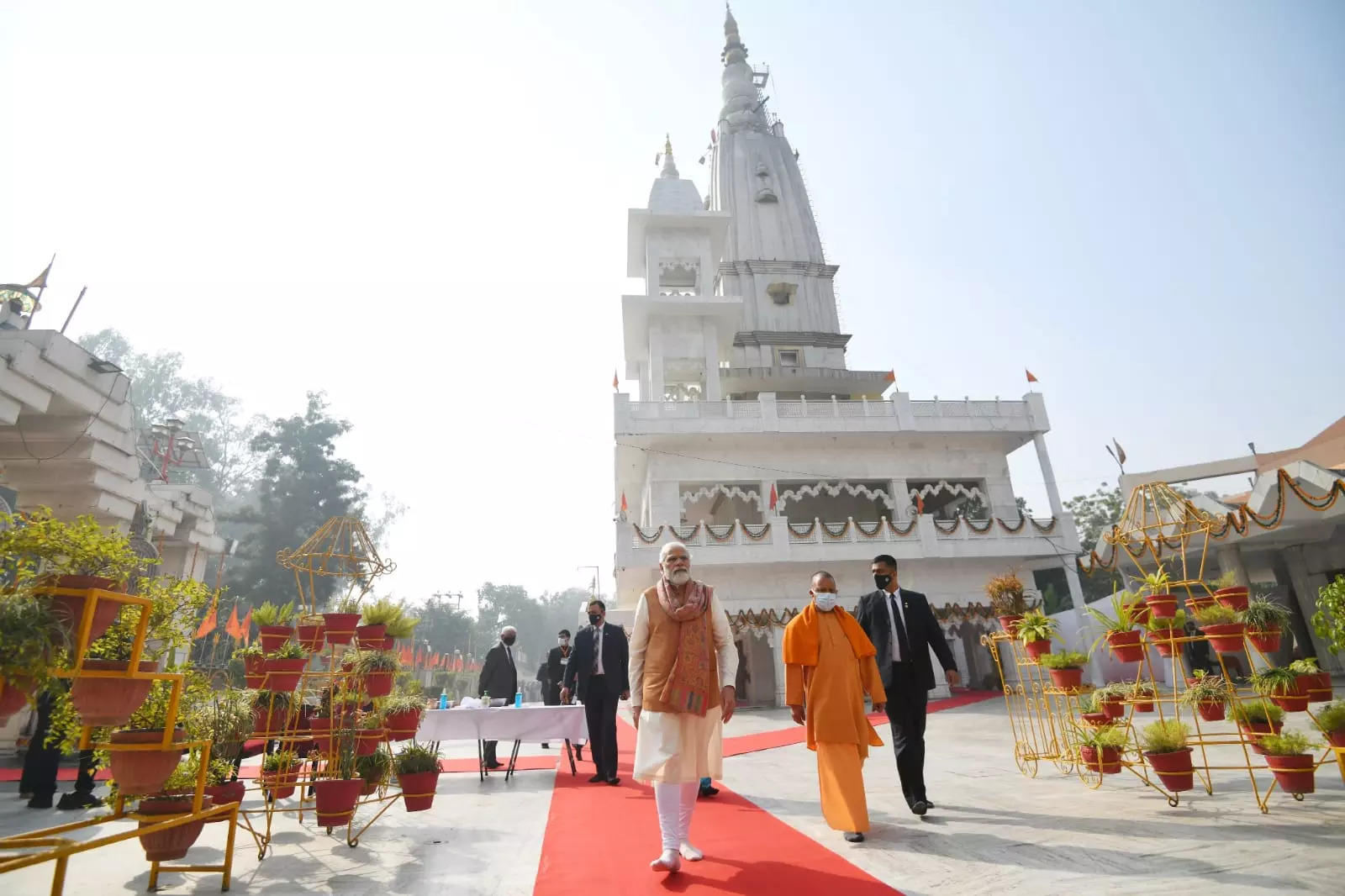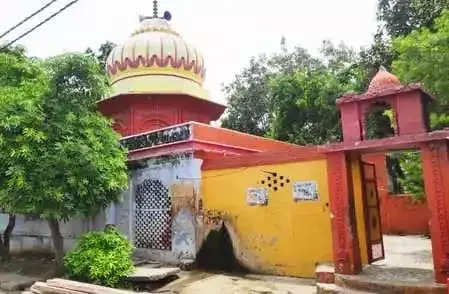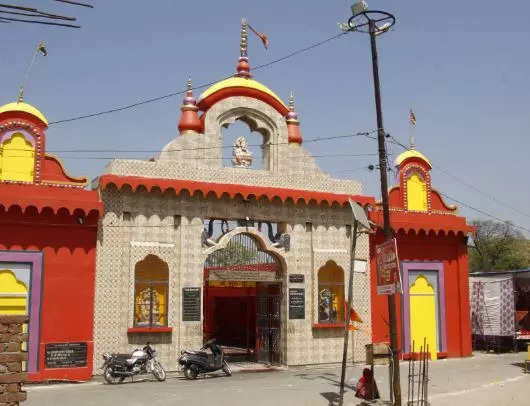
Across civilizations, temples have been the abode of gods where believers pray. The freedom movement in India tweaked this classic definition as some temples became the core of nationalist activities, writes
LUCKNOW: About 20 kilometres from the seat of Guru Gorakshnath in Gorakhpur, stands the temple of Tarkhula Devi. While most describe Tarkhula Devi as Kali, she is the deity of Babu Bandhu Singh, a freedom fighter who gave a tough time to the British during the Uprising of 1857.
“Babu Bandhu Singh worshiped Kali. For his ‘sadhana’, he went inside the deep forests of Debipur and installed a ‘pindi’ (an abstract manifestation of Goddess Shakti) under a group of some ‘tarkul’ (a variety of palm) trees. When commoners got to know about the temple, they started calling it Tarkhula Devi temple,” says Jata Shankar Tripathi, former BJP MLA and a resident of Gorakhpur.
What may leave visitors surprised is that Bandhu Singh, through his guerrilla warfare, caught hold of the British officers posted in the region and killed them in front of his deity as a “sacrifice”.
Finally, Bandhu Singh was arrested and the judge pronounced that he should be hanged in public at Ali Nagar crossing on August 12, 1857. The event, locals claim, was marked by a miracle that established the bond between Bandhu Singh and Tarkhula Devi.
“We have heard from our elders that the hangman could not execute Bandhu Singh in seven attempts as every time the rope would break miraculously, leaving the onlookers awestruck and British officers shocked. On the final occasion, Bandhu Singh remembered his deity and pleaded with her to let him die and depart. The rest is history that has survived generations,” says RK Sinha, another local.
Some even claim that when Bandhu Singh died, one of the trees under which he used to worship collapsed and a stream of blood was seen.
A memorial of Bandhu Singh was later constructed near the temple which, years after the death of Bandhu Singh, was a witness to the Chauri Chaura incident. The tradition of offering sacrifice to the deity for fulfilment of wishes is prevalent even today. Many believers cook goat meat in an open ground near the temple, offer it to the deity and consume the same as ‘prasad’.
Augharnath Temple
Another temple that finds a connection with the Uprising of 1857 is the Augharnath Temple in Meerut’s cantonment area. Also known as Kali Paltan Mandir, this temple is believed to be the place from where the revolt against the British Army began.
“It was from here that the spark of the first war for independence became a raging fire. Soldiers of Kali Paltan, a part of the British Army, often came to quench their thirst from the well on the temple premises. It was the taunt by the chief priest of the temple on the use of cartridges smeared with cow’s fat that instigated the soldiers to turn violent on May 10 and revolt against British rule,” shares MK Singh, a retired government officer.

Other versions of the story, which find mention in some Hindi books, state that the priest at the temple was associated with ‘Sanyasi and Fakir movement’ that began in Bengal and spread to other parts of the country.
Bilaiya Math
Indian soldiers took on the British officers at Bilaiya Math in Jaswantnagar area in Etawah which was a ripple effect of the Meerut revolt.
According to historians, when the news of the uprising reached central UP, a section of Indian soldiers headed towards Etawah-Agra Road to stop the British reinforcement being sent to parts of western UP.

File photo of Bailiya Math, Jaswantnagar
The news reached the then collector of Etawah, AO Hume (who later founded the Congress), and he laid a trap for revolutionaries across the city. The force deployed was directed to arrest any suspicious person.
A leaf from the Chambal Archives (a repository of vernacular documents on freedom movement) indicates that around midnight on May 16, 1857, station head officer of Etawah city police station arrested seven armed persons who were returning to their native village in Fatehpur district after leaving their battalion in Meerut.
They were produced before the commanding officer Cornfield. Before the officer could ask him anything, a rebel opened fire on him. Cornfield escaped unhurt and within minutes his men killed four of the seven rebels. The remaining three managed to escape and hide with the help of locals.
On May 19, some Indian soldiers were heading towards Bilaiya Math when the officers on duty confronted them and asked them to surrender their weapons. One constable was killed while others fled. By the time collector Hume and his loyals could reach the spot, the rebels were taken inside the Math.
Hume surrounded the Math but each time someone from his side moved further, a bullet welcomed amid the battle cry of ‘Har Har Mahadev’.
Within a couple of hours, 15 personnel from the British side, including a deputy collector, Daniel (who had been hit in the head), were killed. Soon, the calls of ‘Har Har Mahadev’ resonated and were echoed by locals who encircled Hume and his men. Sensing trouble, the collector retreated. The public outcry was so strong that Hume didn’t feel safe any longer and reportedly remained disguised to escape civilian attack and heaved a sigh of relief upon reaching Agra.
Tamoli Mandir
Some temples served the nationalist cause during the Gandhian era as well. The Tamoli Mandir in Tirwa area of Kannauj witnessed extensive activities during the Quit India Movement in 1942. According to locals, the ‘Do or Die’ campaign was launched from the temple premises as the British administration had imposed prohibitory orders (Section 144) in the rest of the district.
“On August 13, 1942, more than 6,000 residents of the district and adjoining areas gathered at the temple to raise their voice against British rule and shouted slogans like ‘Angrezon Bharat Chhodo’.
The station head tried to convince the locals to shun their pledge and retreat but the argument turned into a scuffle in which one of the persons assaulted an officer while another took his gun away.
Annoyed over the ‘audacity’, officials on duty – sub-inspector Mehfuz ur Rehman and constable Bhikam Singh – ordered cane charge leaving many grievously injured and many saved their life by jumping into a neighbouring water body,” says Chandreshwar Singh, a school teacher in Tirwa.
Nagla Shirka Shaktipeeth
Nagla Shirka Shaktipeeth in Badaun district was a hideout of freedom fighters. Though little reference about the temple is found in history books, locals claim that the garden in the Kali temple was a meeting place for followers of freedom fighters during the Quit India movement.

Nagla Shirka Temple in Badaun
“Freedom fighters held their meetings in the temple to formulate strategies and mingled with devotees to dodge British officials,” temple priest Shiv Om Sharma says.







